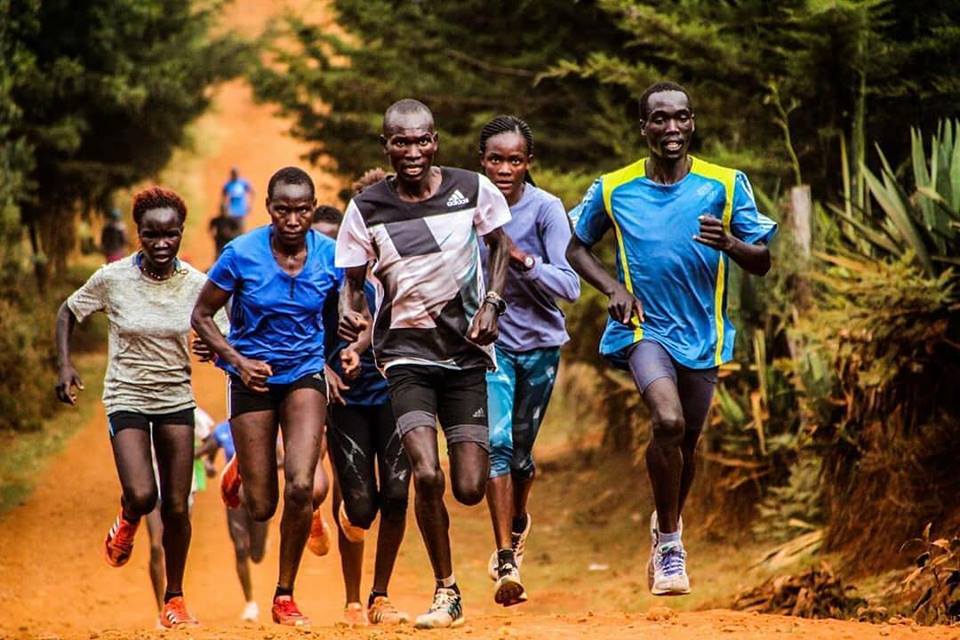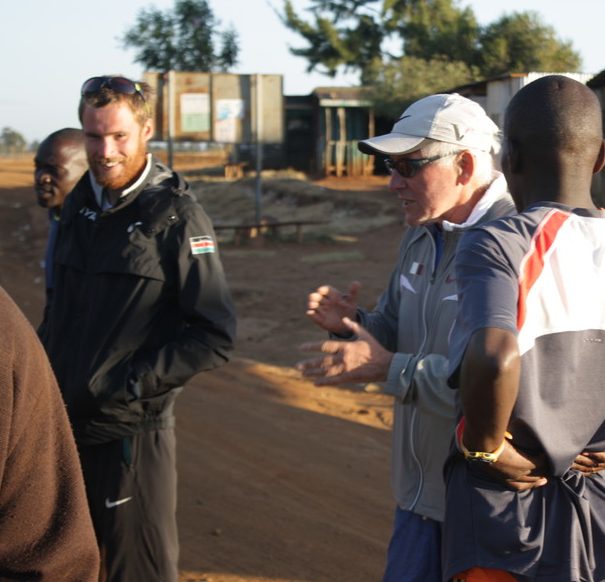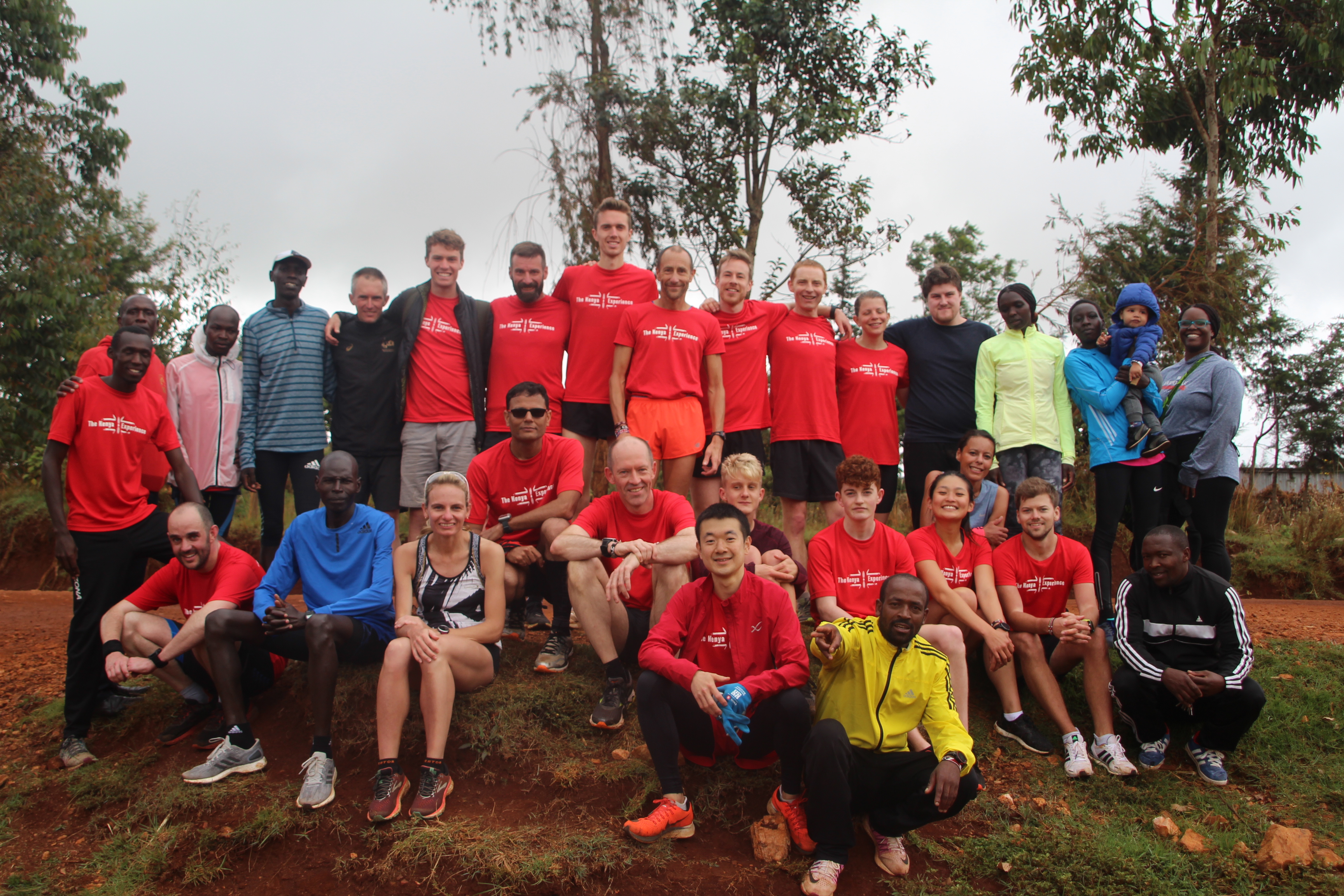
This blog discusses the use of Hill Sprints in training for distance runners. It first appeared on our sister site for Kenya Experience and has been updated and edited by the author.
Hill Sprints were first introduced to me when I was coaching Kenyan runners with Renato Canova. Our group included Florence Kiplagat (2xWorld Half Marathon Champion and former World Record Holder) and Abel Kirui (London Olympic Silver Medalist) and Hill Sprints were a regular part of the training program. I went on to use hill sprints with elite runners I coached directly in Kenya including Gladys Kipkemoi a 9:13 steeplechaser. Upon returning to the UK I discovered that that the benefits extended way beyond the elite runners in Kenya; They proved to be a beneficial and enjoyable part of training for runners from recreational right up to National elite levels.

Author Gavin Smith with Renato Canova in Kenya.
In this blog, I want to explain what Hill Sprints are, how they help distance runners to improve and how you can work them into your training programs.
What:
Hill Sprints are exactly as the name suggests; maximal effort runs up an incline. Each run is limited to approx 10-12seconds in duration and is followed by a long recovery period (approx 2minutes). Thus allowing you to work at a truly maximal level on each individual sprint. A typical session would therefore comprise of something like 6x10seconds Sprint w/2min recoveries.
When:
Hill Sprints are best used on your ‘easy’ or ‘maintenance days’ after a standard endurance run. We would often schedule hill sprints the day prior to a hard workout after completing our main running session of the day. Hill Sprints do not constitute a hard workout in their own right, they are more of an ‘add on’ like you may already use strides. In fact, they can be considered as part of a strength and conditioning program as much as part of the running program. Once you make the initial adaptation to the increased muscular effort (and delayed muscular fatigue) you will not find Hill Sprints to be something that leaves you feeling tired the following day. In fact, they can actually leave you feeling invigorated the following day. Although they are a maximal effort, each run is short enough, and the recovery long enough to avoid the accumulation of fatigue.
Why:
The benefits of hill sprints for distance runners are numerous and include:
A safe way to practice maximal speed sprinting. The incline of the hill means that less impact is absorbed by the runner.
Strengthening of key muscles and tendons. I think of Hill Sprints as a weights session where the resistance is the incline of the hill and the technique of the lift is your running action. That makes hill sprints a very running specific form of weight/resistance training. This is an advantage in terms of injury prevention as well as performance enhancement.
Recruitment of muscle fibres. This is a complex issue but I will try to make it as simple as I am able to. As distance runners, the vast majority of our training is submaximal. As muscle fibres work in cycles we use (and thus train) only a certain percentage of the fibres within our muscles. Thus leaving a portion of our fibres dormant and inactive. These fibres are only called into action during high-intensity bouts of exercise such as a sprint finish, or the final few minutes of a competition. At which point the highly trained fibres we use at submaximal intensities have become exhausted. Therefore we will not be able to call them into action during competition unless we have used these fibres in training. It is no coincidence that those athletes who are able to sprint at the end of the distance race are those who have practiced sprinting in training. Hill sprints are an easy way to achieve this goal.
Increased Stroke Volume. Maximal effort hill sprints elicit a very rapid heart rate response and teach the heart to pump more blood per single stroke (therefore reducing heart rate at a given intensity)
There are other benefits to hill sprints such as improving ground contact time or “reactivity of feet” in the words of famous endurance coach Renato Canova. Not to be underestimated is also the enjoyment factor. As distance runners, we have limited opportunities to take on challenges such as maximal sprinting and you will be surprised how enjoyable this change of emphasis can be. This is something that should not be overlooked when considering an athletes motivation over a prolonged and sustained training period as is necessary for endurance running performance.
Are you looking for ways to take your running to the next level? Learn more about our Online Coaching Service

Example Session: 8×10-12second Hill Sprint with 2minute recovery.
I advise using Hill Sprints over approximately 10-12seconds duration with a long recovery period. Each hill should be considered as one individual maximal effort so adequate recovery between each hill is necessary. The idea is not to try and quickly begin the next hill with a fast recovery. If performed correctly the athlete will be considerably ‘out of breath’ at the end of each hill, and so the usual protocol is a short stationary recovery followed by a slow walk down the hill.
Progressions: Hill Sprints tend not to develop and progress in the same manner as other workouts as they are more of a maintenance and strength and conditioning session which stays stable over time. Once you have built to 8-10×10-12Seconds, simply maintain that level.
Gradient: Generally speaking we look for quite a steep hill but you can play with the gradient depending on what you want to work on. A steeper hill will put more emphasis on muscular strength development and a shallower hill will have more emphasis on speed.
Timing of Workout: Hill Sprints are best utilised on non-workout/session days, for example after an easy run.
I hope that this blog has, at the very least, given you some food for thought regarding the possibilities of using hill sprints in your training as a distance runner. If you are going to give it a try and it is something new to you, then ease into them gently. I suggest just 4 or 5 on the first attempt, gradually building to 8.
Good luck and thanks for reading,
Gavin
About the Author:
Gavin Smith is the Co-Founder of Kenya Experience and Running Trips. He is a distance runner and formerly a coach to some of Kenya’s most decorated athletes. He graduated from Loughborough University in 2007 and lived in Iten Kenya from 2010 – 2014 where he was Assistant Coach to Renato Canova one of the worlds most celebrated distance running coaches. He now lives in Loughborough with his wife Lauren, Son Jacob and Whippet Yego.
Running Trips – Training Camps for Runners

Running Trips provide training camps for runners of all levels in Kenya and the UK.
Kenya Experience
Combine a serious training camp with a cultural immersion into the world of Kenyan Running.
Enjoy the ultimate running holiday with Kenya Experience.
Training Focus Camps
UK based weekend Training Camps. World-Class Experts, Small Groups, High-Performance Venues.
Improve your running with Training Focus Camps.


Recent Comments